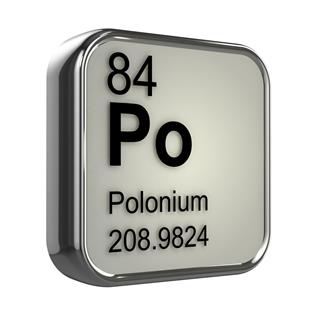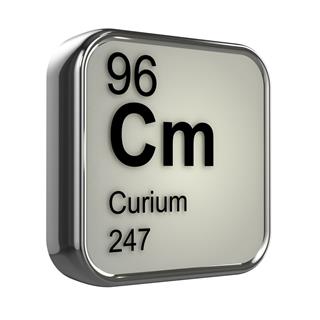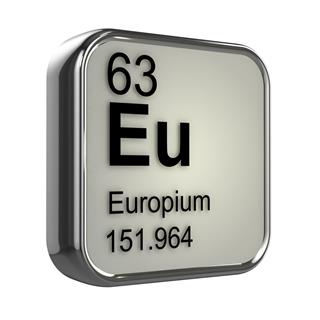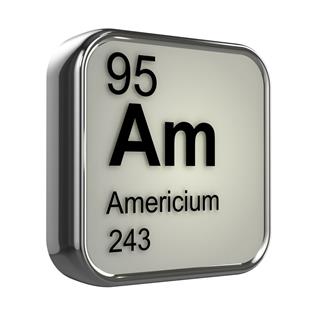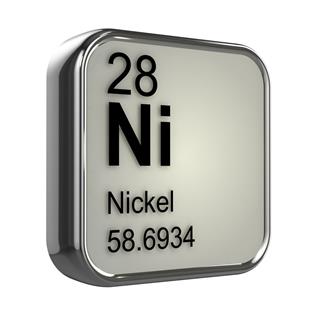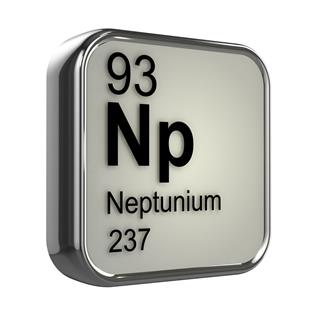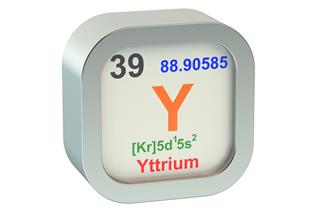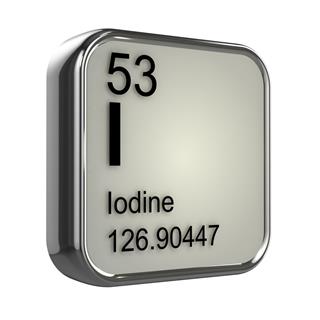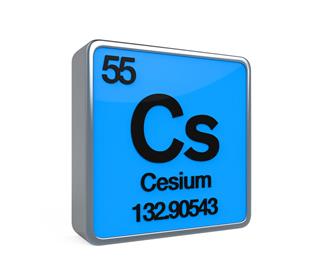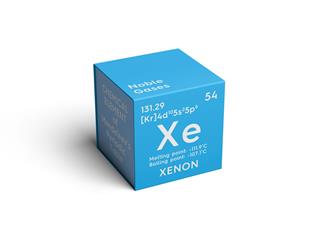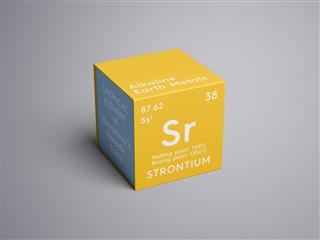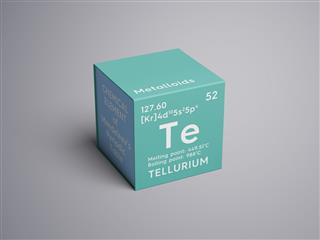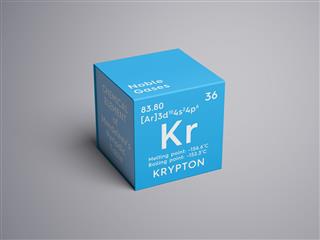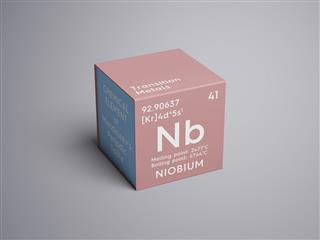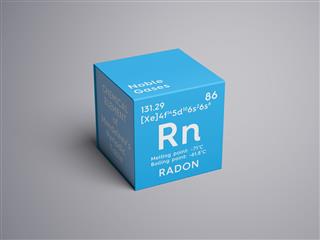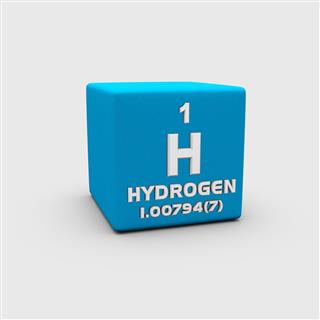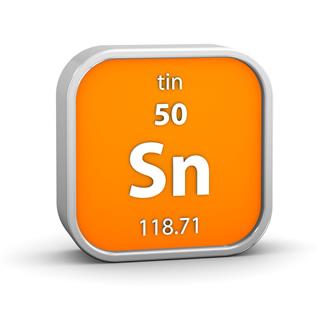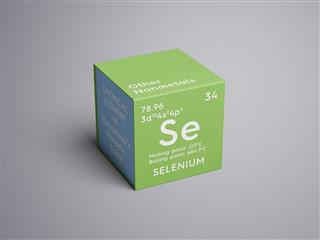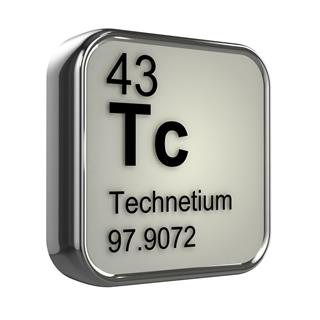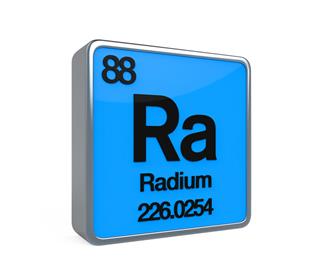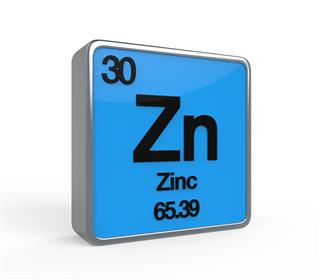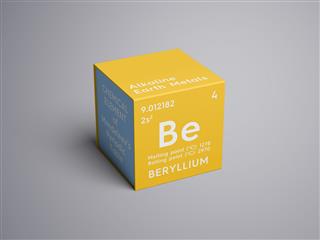
A radioactive element is one with an unstable nucleus, which radiates alpha, beta or gamma radiation and gets converted to a stable element. This article has a comprehensive list of radioactive elements and their properties.
This ScienceStruck article has a list of radioactive elements that abound in nature, arranged in the order of increasing atomic number, along with their decay modes.
Let us understand the phenomenon of radioactivity. Radioactivity arrived on the scene of world physics in the 19th century, just when people thought they knew everything in physics. With its discovery in 1896, radioactivity opened up a Pandora’s box of questions and revealed a new world, waiting to be explored in the microcosm of the atomic nucleus.
What is Radioactivity?
Radioactivity is a very interesting phenomenon in nature. Classical Electromagnetism cannot explain radioactivity. It’s a spontaneous and random phenomenon whereby nuclei of certain chemical elements like Uranium, radiate gamma rays (high frequency electromagnetic radiation), beta particles (electrons or positrons) and alpha particles (Helium Nuclei).
By the emission of these particles and radiation, the unstable nucleus gets converted into a stabler nucleus. This is called radioactive decay.
The Term ‘Radioactive’ – A Misnomer
A radioactive element is a fundamental element whose atomic nuclei demonstrates the phenomenon of radioactivity. The name ‘radioactive’ may suggest to you that radioactive elements radiate radio waves, but unfortunately that is not so! The name ‘radioactivity’ is a misnomer because these elements have nothing to do with radio waves! The reason is that energy and frequency of a gamma ray which is emitted by a radioactive element, is far beyond that of the radio band of electromagnetic spectrum! So, we are just stuck up with the name!
What Makes an Element Radioactive?
To understand radioactivity, we need to explore the structure of an atomic nucleus. Every nucleus contains neutrons as well as protons. Neutrons are neither positively charged, nor negatively charged, they are neutral particles. Protons are positively charged. As you might remember from high school physics, like charges repel each other while unlike charges attract each other. In the nucleus, protons and neutrons are cramped together in a really very small space.
The protons in the nucleus, all being positively charged, repel each other! So if all the protons repel each other, how does the nucleus stay glued together and remain stable? It is because of the ‘Nuclear Force’.
This force is more stronger than the electromagnetic force, but the range of this force is only limited to size of the nucleus, unlike electromagnetic force whose range is infinite. This nuclear force acts between the protons and neutrons, irrespective of the charge and it’s always strongly attractive. However, it has limitations of range. So, in the nucleus, there is a constant tussle between the repelling electromagnetic coulomb force of protons and the attractive strong nuclear force.
In a nucleus like Uranium, which has almost 92 protons, coulomb repulsive force becomes too much for the nuclear force to contain. Subsequently, the nucleus is very unstable and radioactive decay occurs and Uranium decays into a more stable element. Such an unstable nucleus like Uranium, when gently tapped by a neutron, splits up into two other nuclei through nuclear fission, releasing tremendous amount of energy in the process! This is the principle on which nuclear energy and nuclear weapons are based.
The radioactive elements listed below shows all the decay modes of Uranium. A full explanation of radioactivity can only be given, if we plunge deep into quantum physics and elementary particle physics.
Types of Radioactive Decay
Alpha Decay
Nucleus emits a helium nucleus (called an Alpha Particle) and gets converted to another nucleus with atomic number lesser by 2 and atomic weight lesser by 4.
Beta Decay
Beta decay could be of two types; either through emission of an electron or positron (the antiparticle of electron). Electron emission causes an increase in the atomic number by 1, while positron emission causes a decrease in the atomic number by 1. In some cases, double beta decay may occur, involving the emission of two beta particles.
Gamma Decay
Gamma decay just changes the energy level of the nucleus.
Electron Capture
One of the rarest decay modes is electron capture. In this phenomenon, an electron is captured or absorbed by a proton rich nucleus. This leads to the conversion of a proton into a neutron in the nucleus, along with release of an electron neutrino. This leads to a decrease in atomic number (transmuting the element in the process), while leaving the atomic mass number unchanged.
A radioactive element may have more than one decay mode.
Radioactive Isotopes
When two nuclei have the same atomic number, but different atomic weight or mass numbers, then they are said to be isotopes. Isotopes have the same chemical properties but different physical properties. For example, carbon has two isotopes, 6C14 and 6C12. Both have the same atomic number, but different number of neutrons. The one with the two extra neutrons is radioactive and undergoes radioactive decay. The radioactive isotope of carbon was used to develop carbon dating tool, which has made the dating of various relics possible.
Half-Life of a Radioactive Element
Half-life is the amount of time required, for half quantity of radioactive element to decay. For example C14has a half life of 5730 years. That is, if you take 1 gm of C14, then half of it will have been decayed in 5730 years. In the list presented below, half-lives of all the radioactive elements are presented.
Radioactive Elements List
Here is a detailed and comprehensive list of natural radioactive elements along with their atomic and mass numbers, decay modes and half-lives. Here ‘Beta Decay (β–)’ denotes electron emission while Beta Decay (β+) denotes positron emission.
| Radioactive Element | Atomic Number | Atomic Mass Number | Decay Type | Half-Life |
| Hydrogen (H) | 1 | 3 | Beta Decay (β–) | 12.32 years |
| Beryllium (Be) | 4 | 7 | Electron Capture (ε), Gamma Decay) | 53.12 Days |
| Beryllium (Be) | 4 | 8 | Alpha | 7 x 10-17sec |
| Beryllium (Be) | 4 | 10 | Beta Decay (β–) | 1,360,000 years |
| Carbon (C) | 6 | 14 | Beta Decay (β–) | 5,730 years |
| Calcium (Ca) | 20 | 41 | Electron Capture (ε) | 103,000 years |
| Calcium(Ca) | 20 | 46 | Double Beta Decay (β–β–) | > 2.8 x 1015 years |
| Calcium(Ca) | 20 | 48 | Double Beta Decay (β–β–) | > 4 x 1019 |
| Iron (Fe) | 26 | 54 | Double Electron Capture (ε) | > 3.1 x 1022years |
| Iron (Fe) (Synthetic) | 26 | 55 | Electron Capture (ε) | 2.73 years |
| Iron (Fe) (Synthetic) | 26 | 59 | Beta Decay (β–) | 44.503 days |
| Iron (Fe) (Synthetic) | 26 | 60 | Beta Decay (β–) | 2,600,000 years |
| Cobalt (Co) (Synthetic) | 27 | 56 | Electron Capture (ε) | 77.27 days |
| Cobalt (Co) (Synthetic) | 27 | 57 | Electron Capture (ε) | 271.79 days |
| Cobalt (Co) (Synthetic) | 27 | 58 | Electron Capture (ε) | 70.86 days |
| Cobalt (Co) (Synthetic) | 27 | 60 | Beta Decay (β–), Double Gamma | 5.2714 years |
| Nickel (Ni) | 28 | 59 | Electron Capture (ε) | 76,000 years |
| Nickel (Ni) (Synthetic) | 28 | 63 | Beta Decay (β–) | 100.1 years |
| Zinc (Zn) (Synthetic) | 30 | 65 | Electron Capture (ε), Gamma | 243.8 days |
| Zinc (Zn) (Synthetic) | 30 | 72 | Beta Decay (β–) | 46.5 hours |
| Selenium (Se) | 34 | 79 | Beta Decay (β–) | 3.27 x 105years |
| Selenium (Se) | 34 | 82 | Double Beta Decay (β– β–) | 1.08 x 1020years |
| Krypton (Kr) | 36 | 85 | Beta Decay (β–) | 10.756 years |
| Rubidium (Rb) | 37 | 87 | Beta Decay (β–) | 4.88 x 1010 years |
| Strontium (Sr) | 38 | 89 | Electron Capture (ε), Beta Decay (β–) | 50.52 days |
| Strontium (Sr) | 38 | 90 | Beta Decay (β–) | 28.9 years |
| Yttrium (Y) | 39 | 90 | Beta Decay (β–), Gamma | 2.67 days |
| Yttrium (Y) | 39 | 91 | Beta Decay (β–), Gamma | 58.5 days |
| Zirconium (Zr) | 40 | 93 | Beta Decay (β–) | 1.53 x 106years |
| Zirconium (Zr) | 40 | 94 | Double Beta Decay (β–) | > 1.1 x 1017years |
| Zirconium (Zr) | 40 | 96 | Double Beta Decay (β–) | 2 x 1019years |
| Niobium (Nb) (Metastable) | 41 | 93 | Beta Decay (β–),Gamma | 16.13 years |
| Niobium (Nb) | 41 | 95 | Beta Decay (β–), Gamma | 34.991 days |
| Molybdenum (Mo) | 42 | 93 | Electron Capture (ε) | 4 x 103years |
| Technetium (Tc) | 43 | 99 | Beta Decay (β–) | 2.111 x 105years |
| Ruthenium (Ru) | 44 | 103 | Beta Decay (β–), Gamma | 39.26 days |
| Ruthenium(Ru) | 44 | 106 | Beta Decay (β–) | 373.59 days |
| Palladium (Pd) | 46 | 107 | Beta Decay (β–), Gamma | 6.5 million years |
| Silver (Ag) | 47 | 111 | Beta Decay (β–), Gamma | 7.45 days |
| Tin (Sn) | 50 | 126 | Beta Decay (β–) | 2.3 x 105years |
| Antimony (Sb) | 51 | 125 | Beta Decay (β–) | 2.7582 years |
| Tellurium (Te) | 52 | 127 | Beta Decay (β–), Gamma |
9.35 hours |
| Tellurium (Te) | 52 | 129 | Beta Decay (β–) | 69.6 minutes |
| Iodine (I) | 53 | 123 | Electron Capture (ε), Gamma | 13 hours |
| Iodine (I) | 53 | 129 | Beta Decay (β–) | 15.7 million years |
| Iodine (I) | 53 | 131 | Beta Decay (β–), Gamma | 8.02070 days |
| Xenon (Xe) | 54 | 125 | Electron Capture (ε) | 16.9 hours |
| Xenon (Xe) | 54 | 127 | Electron Capture (ε) | 36.345 days |
| Xenon (Xe) | 54 | 133 | Beta Decay (β–) | 5.247 days |
| Cesium (Cs) | 55 | 134 | Electron Capture (ε), Beta Decay (β–) | 2.0648 years |
| Cesium (Cs) | 55 | 135 | Beta Decay (β–) | 2.3 million years |
| Cesium (Cs) | 55 | 137 | Beta Decay (β–), Gamma | 30.17 years |
| Cerium (Ce) | 58 | 144 | Beta Decay (β–) | 285 days |
| Promethium (Pm) | 61 | 147 | Beta Decay (β–), Gamma | 2.6234 years |
| Europium (Eu) | 63 | 154 | Beta Decay (β–), Beta Decay (β+), Gamma | 16 years |
| Europium (Eu) | 63 | 155 | Beta Decay (β–) | 2 years |
| Iridium (Ir) (Synthetic) | 77 | 188 | Electron Capture (ε) | 1.73 days |
| Iridium (Ir) (Synthetic) | 77 | 189 | Electron Capture (ε) | 13.2 days |
| Iridium (Ir) (Synthetic) | 77 | 190 | Electron Capture (ε) | 11.8 days |
| Iridium (Ir) (Synthetic) | 77 | 192 | Beta Decay (β–), Electron Capture (ε) | 73.827 days |
| Iridium (Ir) (Synthetic, Metastable) | 77 | 192 | Gamma Decay | 241 years |
| Iridium (Ir) (Synthetic) | 77 | 193 | Gamma Decay | 10.5 days |
| Iridium (Ir) (Synthetic) | 77 | 194 | Beta Decay (β–) | 19.3 hours |
| Iridium (Ir) (Synthetic, Metastable) | 77 | 194 | Gamma Decay | 171 days |
| Lead (Pb) | 82 | 210 | Beta Decay (β–), Alpha | 21 years |
| Bismuth (Bi) | 83 | 210 | Alpha | 3 million years |
| Polonium (Po) | 84 | 210 | Alpha | 138 days |
| Radon (Rn) | 86 | 220 | Alpha, Beta Decay (β+) | 1 min |
| Radon (Rn) | 86 | 222 | Alpha | 4 days |
| Radium (Ra) | 88 | 224 | Alpha | 4 days |
| Radium (Ra) | 88 | 225 | Beta Decay (β–) | 15 days |
| Radium (Ra) | 88 | 226 | Alpha | 1,622 years |
| Thorium (Th) | 90 | 228 | Alpha | 2 years |
| Thorium (Th) | 90 | 229 | Alpha | 7,340 years |
| Thorium (Th) | 90 | 230 | Alpha | 80,000 years |
| Thorium (Th) | 90 | 232 | Alpha | 14 years |
| Thorium (Th) | 90 | 234 | Beta Decay (β–) | 24 days |
| Proactinium (Pa) | 91 | 234 | Beta Decay (β–) | 6.75 hours |
| Uranium (U) | 92 | 233 | Alpha | 159,200 years |
| Uranium (U) | 92 | 234 | Alpha | 245,500 years |
| Uranium (U) | 92 | 235 | Alpha | 7.038 x 108 years |
| Uranium (U) | 92 | 236 | Alpha | 2.342 x 107 years |
| Uranium (U) | 92 | 238 | Alpha | 4.468 billion years |
| Neptunium (Np) (Synthetic) | 93 | 237 | Alpha | 2.144 million years |
| Plutonium (Pu) | 94 | 238 | Alpha | 87.74 years |
| Plutonium (Pu) | 94 | 239 | Alpha | 2.41 x 104years |
| Plutonium (Pu) | 94 | 240 | Alpha | 6.5 x 103years |
| Plutonium (Pu) | 94 | 241 | Beta Decay (β–) | 14 years |
| Plutonium (Pu) | 94 | 242 | Alpha | 3.73 x 105years |
| Plutonium (Pu) | 94 | 244 | Alpha | 8.08 x 107years |
| Americium (Am) | 95 | 241 | Alpha | 432.2 years |
| Americium (Am) (Metastable) | 95 | 242 | Alpha, Gamma | 141 years |
| Americium (Am) | 95 | 243 | Alpha | 7,370 years |
| Curium (Cm) | 96 | 242 | Alpha | 160 days |
| Curium (Cm) | 96 | 243 | Alpha | 29.1 years |
| Curium (Cm) | 96 | 244 | Alpha | 18.1 years |
| Curium (Cm) | 96 | 247 | Alpha | 15.6 million years |
These radioactive isotopes have a lot of applications today, ranging from medicine to atomic energy. Since these radioactive elements are harmful, burning up radioactive waste or disposing it, is difficult. Every development in science and technology brings in new problems. Now, it’s for us to decide, how we intend to use the power of technology placed in our hands.

